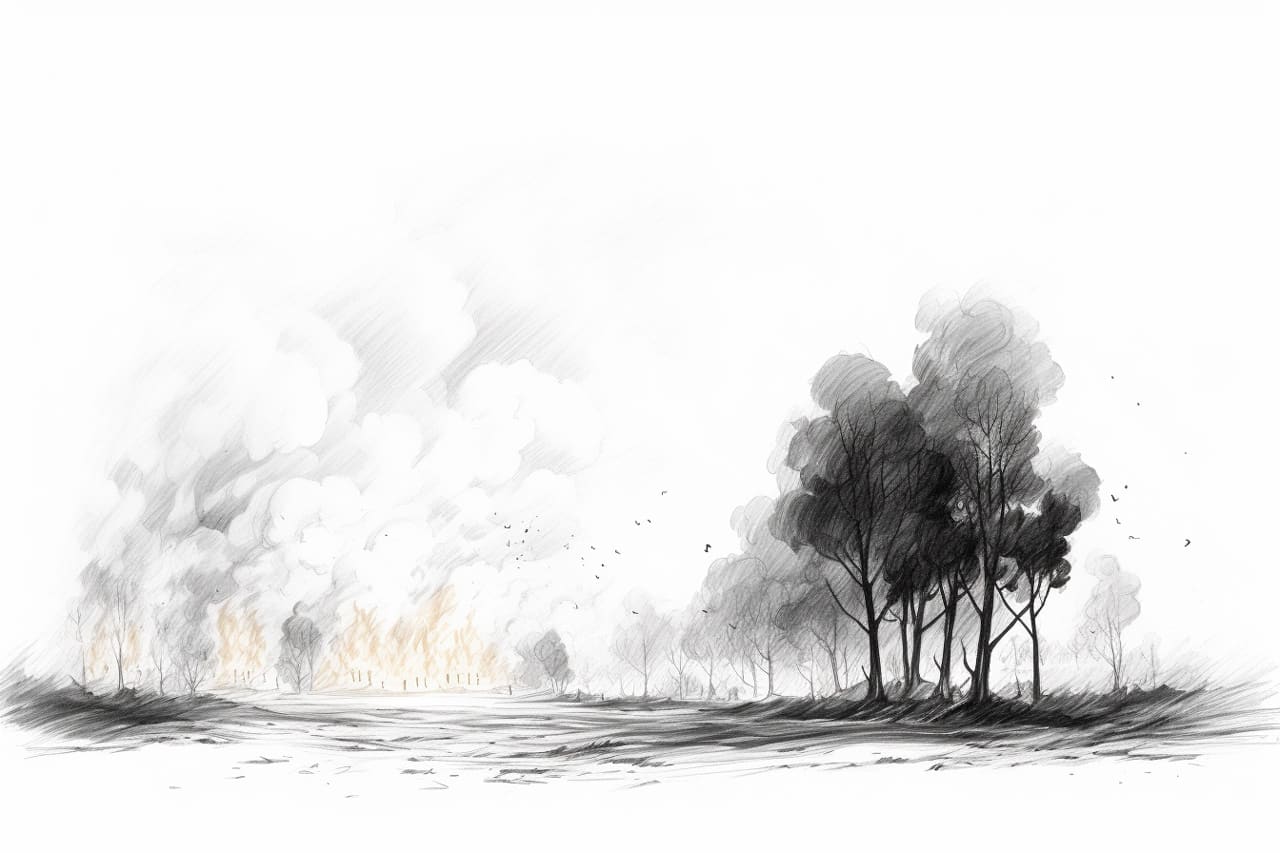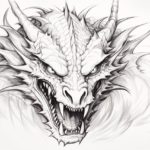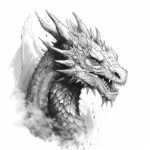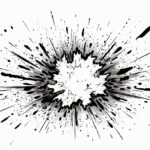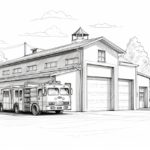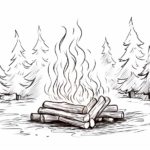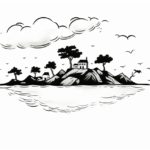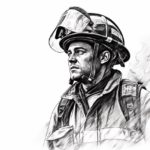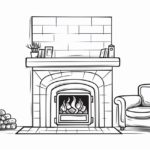Drawing wildfire can be a powerful and dynamic artistic endeavor, capturing nature’s intense energy and destructive force. From the billowing smoke and fierce flames to the scorched landscape and brave firefighters battling the blaze, there is a wealth of visual inspiration to explore. In this guide, we will delve into the techniques and tips for how to draw a wildfire, from capturing the movement of flames to creating the illusion of heat and intensity on the page. So grab your pencils and paper, and let’s dive into the world of drawing this captivating and challenging subject.
Materials Required
To draw a Wildfire, you will need the following materials:
- Drawing paper or sketchbook
- Pencils (graphite pencils of varying hardness)
- Charcoal pencils or sticks
- Erasers (kneaded eraser and regular eraser)
- Blending stumps or tortillons for blending
- Colored pencils or pastels for adding color if desired
- Reference images of wildfires for inspiration and accuracy:
How to Draw a Wildfire: a Step-by-step Guide
Step 1: Gather Your Materials
Gather the necessary materials to create your Wildfire drawing. You will need a pencil, eraser, drawing paper, and colored pencils or markers for coloring.
Step 2: Sketch the Base
Start by lightly sketching the outline of the wildfire on your drawing paper using a pencil. Wildfires typically have a chaotic and swirling shape, so feel free to be creative with your design.
Step 3: Add Flames and Smoke
Start adding details of flames and smoke within the outline of the wildfire. Draw flames shooting out from the base of the fire in a flickering motion. Include wisps of smoke rising from different parts of the wildfire.
Step 4: Create Depth and Texture
To give your wildfire drawing depth and texture, vary the thickness of your lines. Use hatching and cross-hatching techniques to add shading and dimension to the flames and smoke. Consider where the light source is coming from and shade accordingly.
Step 5: Add Details
Add details such as embers, glowing areas within the flames, and charred sections to make your wildfire drawing more realistic. Please pay attention to the details of the flames and smoke to make them look dynamic and lively.
Step 6: Color Your Wildfire
Once you are satisfied with the overall composition of your wildfire drawing, it’s time to add color. Use vibrant shades of red, orange, and yellow for the flames and lighter shades for the smoke. Experiment with blending colors to create a more realistic, fiery effect.
Step 7: Final Touches
After coloring your wildfire, take a step back and assess your drawing. Make any necessary adjustments or additions to enhance the overall look of the artwork. Consider adding a background or surrounding elements to complement the wildfire.
Step 8: Finishing Touches
Once happy with your wildfire drawing, go over the lines with a darker pencil or pen to define the outlines and details. Erase any remaining pencil marks and smudges to clean up the drawing and make it look polished.
Step 9: Sign and Date
Sign your artwork in the corner with your name and date to mark it as your creation. Congratulations on completing your wildfire drawing!
Conclusion
Congratulations on completing your drawing of a Wildfire! Your use of colors and shapes to depict the intensity and movement of the flames is truly impressive. Remember, art is a powerful form of self-expression and creativity. Explore different techniques and subjects to further develop your skills and unique style. Your passion and dedication to your art are evident in this piece, and I encourage you to continue pushing yourself to new heights. Keep up the great work, and never stop creating!
Fun Facts About Wildfires
- Lightning strikes are a common cause of wildfires, with an estimated 50% of wildfires in the United States being started by lightning.
- Some plants, such as certain pine trees, have evolved to rely on wildfires to spread their seeds and clear out competing vegetation.
- The heat from a wildfire can create its weather system, including strong winds that can further spread the fire.
- Wildfires can move incredibly fast, sometimes reaching up to 14 miles per hour.
- Smoke from wildfires can travel vast distances, affecting air quality and visibility in areas far from the fire.
- The largest wildfire in recorded history was the 2003 Siberian Taiga Fires, which burned an area larger than the country of Portugal.
- Firefighters use a variety of tactics to combat wildfires, including backburning (controlled burning of vegetation ahead of the fire) and creating fire breaks (clearing vegetation to create a barrier).
- Wildfires can have positive and negative ecological impacts, depending on the ecosystem and the severity of the fire.
- Some animals, like certain species of birds, insects, and small mammals, have adapted to thrive in post-fire environments.
- Climate change is expected to increase the frequency and intensity of wildfires in many parts of the world, posing a significant challenge for fire management agencies.
Suggestions for Scenes and Settings for Wildfire Drawings
- A vast, sweeping landscape with a raging wildfire in the distance showcasing the scale and intensity of the blaze against the natural beauty of the surroundings.
- A close-up of a solitary tree engulfed in flames, capturing the contrast between the vibrant orange of the fire and the dark silhouette of the tree.
- A group of firefighters battling the wildfire, emphasizing the heroism and teamwork in fighting such a dangerous force of nature.
- A wildlife habitat devastated by the wildfire, with charred trees and scorched earth, highlights wildfires’ impact on ecosystems.
- A nighttime scene of a wildfire illuminating the sky with an eerie glow, creating a dramatic and haunting atmosphere.
- A series of sketches showing the progression of a wildfire spreading through a forest, from a tiny spark to a full-blown inferno.
- An aerial view of a wildfire burning through a mountainous region showcasing the rugged terrain and firefighters’ challenges in containing the blaze.
- A depiction of the aftermath of a wildfire, with smoldering embers and a sense of desolation, conveying the devastating effects of such natural disasters.
- A surreal interpretation of a wildfire, using abstract shapes and colors to evoke wildfires’ chaotic and unpredictable nature.
- A peaceful scene of a controlled burn, where a prescribed fire manages vegetation and prevents more enormous wildfires, highlights fire’s role in maintaining healthy ecosystems.

